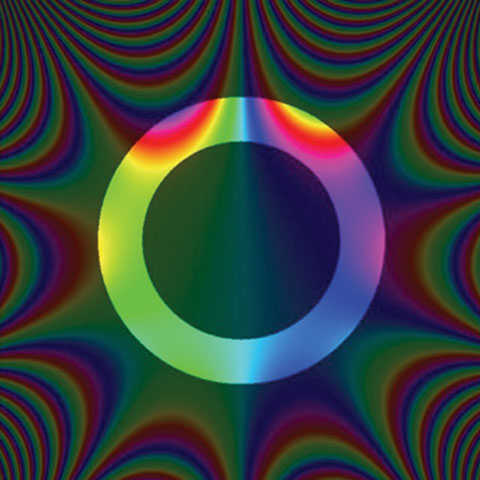Vortex Electron Beam

A simulation of an electron microscope aperture that allows electron beams through it. Vortex beams created with adjustments to the microscope lens may lead to more accurate beams.
Image Credit: L. Clark et al./APS
September 17, 2013
With focused electron beams, electron microscopes allow scientists to see the otherwise invisible world of the very small. Traditional optical microscopes are limited by diffraction limits related to the wavelengths of light.
Instead, electron microscopes shoot electron beams at a target and create an image based on how many electrons pass through and how many deflect off the target. Although these types of microscopes have been around for well over half a century, scientists are always aiming to improve their precision.
The image above reveals one such technique scientists are investigating that may lead to more accurate electron microscope results. With a tweak to correcting lenses used for electron microscopes, Laura Clark (University of Antwerp) and her colleagues created a vortex beam of electrons.
Unlike a typical beam, the electrons' wavefront from Clark's experiment rotates around a central axis like a corkscrew, possibly leading to higher-intensity, more precise beams.














